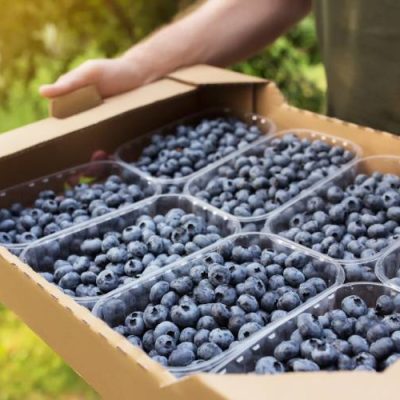The Chilean blueberry industry is back
- . June 2025
“Chile has managed to overcome the varietal crisis, revive market interest, and reposition itself with a high-quality product. All of this reinforces the resilient, competitive, and strategic nature of an industry that strives to remain at the forefront of the global market.”
The sudden and exponential emergence of the Peruvian blueberry industry, coupled with the new varietal offering—far superior in fruit productivity and quality—and the high standards of both consumers and the market, relegated the Chilean blueberry industry to a secondary position in the global landscape. In less than five years, Chile went from being the absolute leader in global blueberry exports to a largely undistinguished industry, one that some consider almost dead.
According to 2025 International Blueberry Market Yearbook by iQonsulting, The total volume of blueberries exported by countries in the Southern Hemisphere during the 2024/25 season reached 436.431 tons, representing a 28% increase compared to the previous season.
Peru maintained its leadership as the leading exporter of fresh blueberries, with a total volume of 317.847 tons, representing a 42% increase compared to the previous season. In second place, Chile also recorded growth in its exports, up 5% to a total of 90.647 tons.
Strategic vision
In this context, the words of Isabel Quiroz, director of iQonsulting and a leading figure in Chilean agro-export analysis, reflect a clear, realistic, and strategic view of the current state of the Chilean blueberry industry. Her analysis recognizes both the challenges faced by the sector in recent years and the key decisions that have enabled its recovery and repositioning in the global market.
First, Quiroz offers a lucid interpretation of the natural cycle of agricultural industries. He points out that, after an initial boom period—marked by high prices and market enthusiasm—there comes a point at which varietal innovation, competitiveness, and productive efficiency become essential. This diagnosis is especially pertinent for blueberries, whose explosive growth in previous years led to an oversupply of varieties that did not always meet market demands.
Varietal reengineering
The value of his analysis is that it does not limit itself to criticism, but rather highlights with well-founded optimism the varietal reengineering process the country has undergone. He underscores the leading role of the Chilean Blueberry Committee in the technical and commercial evaluation of new varieties, as well as the sector’s ability to adapt, renew orchards, and refocus its export strategy. This translates into an industry that has once again begun to offer a solid product, attractive to consumers and of high interest to international importers.
Chile is back
Another key point in his remarks is the value of frozen blueberry exports as a mechanism for volume absorption and price stabilization. This transformation, which has involved modernization and mechanization of the harvest, has not only sustained the profitability of many orchards but also positions Chile as a benchmark for other fruit industries seeking commercial diversification.
Finally, Isabel Quiroz sends a powerful message when she states that the Chilean blueberry industry “is back.” She attributes this recovery to the sector’s conscious decision to move toward sustainability, quality, and differentiation—key elements for competing in a global environment where the market no longer rewards only volume, but also efficiency, traceability, and added value.
Far from presenting an idealized scenario, Isabel Quiroz’s vision of the current and future state of the Chilean blueberry industry in 2025 is a combination of technical analysis, strategic vision, and commitment to sustainability. She acknowledges past mistakes and celebrates the sector’s ability to reinvent itself. Her message is clear: Chile has managed to overcome the varietal crisis, revive market interest, and reposition itself with a high-quality product. All of this reinforces the resilient, competitive, and strategic nature of an industry that seeks to remain at the forefront of the global market.
11.06.2025
Source: Blueberriesconsulting.com







